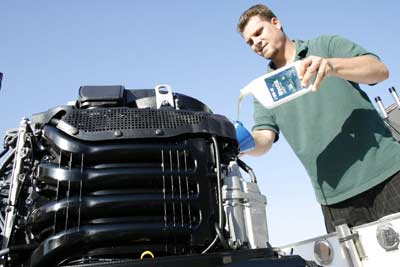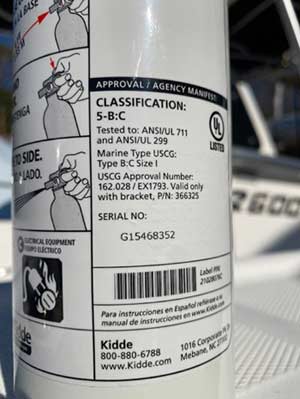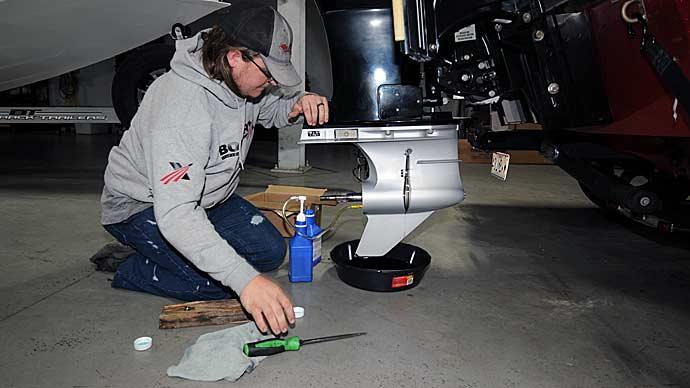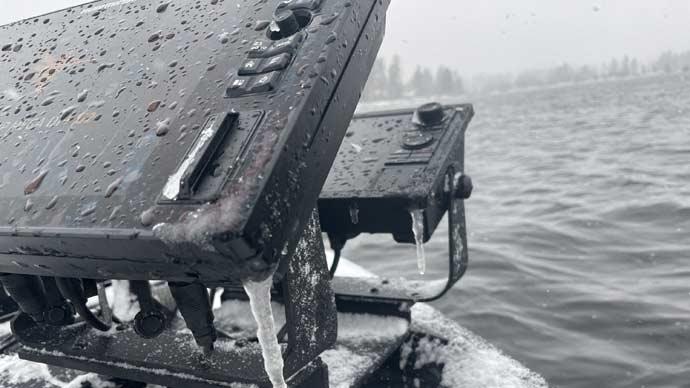
The individual defines boating season. For example, if you live where the sun shines nearly every day, and the temperature rarely dips below 50 degrees, then yours runs year-round. But if snow usually starts falling on your home lakes sometime in October, with ice following not long after, then yours includes a several-month pause. Everyone else’s season lies somewhere in between.
But the end of one season means the start of the next is on its way. And when spring finally arrives, bass anglers begin pulling their boats from storage. That may happen in milder climates as soon as February or March, though late-season snowstorms can push it further north into late April. And those are the early birds. Some boaters always wait until Memorial Day.
Regardless of when you awaken your boat, certain things must be done before towing it to your favorite fishing hole for the first time. Just like there is a list of things to do when you store your boat at the end of the season, there are things that need to checked as you pull it from storage. If you’re handy, spring commissioning isn’t an issue. But if you aren’t or have questions, seeking advice or help from a qualified mechanic is a good move.
While trailers need an inspection, here are the significant points you must check before your boat's first season voyage. If you see something else wrong or needing attention, don’t hesitate to address it. A little extra work in your driveway or garage will lead to many more good memories on the water.
-
Visual inspection
Suzuki Marine, whose outboards are being hung on more and more freshwater fishing boats, recommends starting your spring commissioning with a visual inspection, noting any damage, repairs, or maintenance needs. While some may be left over from your previous boating season — “I’ll worry about it in the spring” — others can result from storage. Rodents and birds, for example, are known to build winter nests in boat compartments and under outboard cowls. As a result, they make a mess, clog intakes and cause damage, such as broken wires.
Look for water-related issues, too. For example, leaving a damp item in a compartment can cause mold or mildew to grow. Thoroughly clean any that you find. Suzuki adds that more significant amounts of trapped water will expand when frozen. So, if you expect water to have gotten into your boat or a compartment, look for issues such as cracked or broken hoses, fittings, drains, and pumps.
BoatUS is the nation’s largest recreational boating advocacy, services, and safety group, with more than 700,000 members. It suggests starting your spring commissioning with a visual inspection, too. Start with the hull, checking for blisters, distortions, and stress cracks in ones made from fiberglass. Next, check for loose or missing rivets in aluminum hulls, dents, and cracks. Address these issues immediately.
-
Engine Start
Make sure your outboard starts in the spring begins when it goes into storage. Suzuki said that’s the time to change its gear and engine oils, replace its water-separating fuel filter, apply fogging oil to protect internal parts from corrosion, and add fuel treatment, such as Techron Marine Protection Plus, to its gas tanks. It stabilizes fuel, preventing water absorption, so it remains ready to use. It also includes cleaners that help maintain injectors and other fuel-system components. So, be sure to start and idle your outboard after it’s added so that it can circulate. Don’t worry if you missed some or all of these points; they can be done in the spring, except for the fogging oil.
Starting your outboard before your first trip is a good idea. Nothing else is more frustrating for you and the other boaters waiting in line than a problem at the ramp. Suzuki says to hook your outboard to a garden hose or place it in a large barrel. If it’s small enough, start it and let it idle. That will burn off fogging oil applied last fall and circulate fuel treatment.
Suzuki says spring is an excellent time to clean your outboard’s sparkplugs or consider replacing them, especially if it’s time according to the manufacturer's recommended maintenance schedule. New plugs help your outboard start quickly and burn fuel more efficiently. So the best point in spring commissioning is to clean or change them before the first start. That removes any residual fogging spray, helping your outboard quickly roars to life from its hibernation.
-
Charge batteries
Image
If you wear an inflatable PFD, ensure it's charged and ready to deploy. Don’t hesitate to replace cartridges whose indicators aren’t green. Photo by Pete M. Anderson Batteries keep your boat running. And regular charging and discharging cycles take a toll. So start your inspection at the terminals, tightening loose connections and removing any corrosion with a wire brush. Suzuki recommends treating clean terminals with dielectric grease, preventing corrosion from returning.
If you run traditional lead-acid batteries, carefully remove the covers on any that aren’t sealed, and check the liquid level in each cell. Add an appropriate amount of distilled water to those that are low.
Hook up a charger — or plug in your onboard unit — and allow your starting, trolling motor, and dedicated electronics batteries to charge fully. Replace any batteries that won’t take a full charge. If you decide to replace all your batteries, this would be the time to consider upgrading to AGM or lithium-ion batteries. The latter is becoming more popular because they offer a longer run time and lifespan than lead-acid batteries at less than half the weight. However, their hefty upfront price, which often works out to less per year of use than traditional batteries, and the possibility of upgrading your charger must be considered.
Once your batteries are ready, Suzuki recommends testing your boat's electrical system, including running and navigation lights, bilge pumps, and other accessories. Then, fix any issues often caused by blown fuses or loose or corroded wires.
-
Run livewells
Suzuki recommends opening and closing all valves, including remote drain plugs and those connected to baitwells and livewells. If any are hard to move, consider lubricating, if possible, or replacing them.
Livewells require a bit more attention. Clean debris from filter screens and operate the fresh water and recirculating pumps. Look for leaks at fittings, pipes, and hoses. Issues downstream from a pump could fill your bilge with water, creating a potentially dangerous situation.
And be sure your boat has a supply of livewell treatment if you fish tournaments. Springtime bass, especially post-spawners, are easily stressed. Treatments calm them, improving their chances for survival after release. You’ll see that small effort pay off in better tournament results and stronger fisheries.
-
Check safety equipment
Image
Take time to inspect your boat’s safety equipment. A recently enacted regulation, for example, sets a universal expiration based on the manufacture date for fire extinguishers and dictates which types can be used. Photo courtesy of BoatUS U.S. Coast Guard and various state and federal agencies require boaters to carry certain safety items. They vary by agency and body of water, so review regulations local to where you’re fishing. Some have been recently updated. Here are a few to note.
- Kill switch: A 2021 law requires operators of vessels less than 26 feet to use an engine cutoff switch — kill switch — when boating. While it only applies to Coast Guard patrolled waters, such as the Great Lakes, BoatUS counts seven states — Alabama, Arkansas, Illinois, Louisiana, Nevada, New Jersey, and Texas — with a version of the law expecting more to follow suit.
- Flares: Requirements for these signaling devices are restricted to Coast Guard-patrolled waters for the most part, though they can be helpful in any emergency. Watch their expiration date, which BoatUS says is 42 months from manufacture. Disposing of them safely can be tricky, so check with your local fire department when it’s time.
- Fire extinguisher: An April 2022 Coast Guard regulation places an expiration date — 12 years from the manufacture date — on all fire extinguishers. BoatUS says two- or four-digit year codes for manufacture dates are stamped on the bottom of extinguishers or near their UL label. Requirements for the number and types of extinguishers remain the same. For example, boats under 26 feet and older than the model year 2017 can continue carrying an unexpired and serviceable B-1 or B-2 disposable extinguisher. But once it expires or becomes unserviceable, it must be replaced with a new 5-B or greater extinguisher. Boats less than 26 feet and 2018 model year or newer must have an unexpired 5-B, 10-B, or 20-B extinguisher.
Your personal floatation device needs to be in good working order, too. That’s especially true if you choose to wear an inflatable PFD. So while inspecting its straps, material, and buckles for wear and tear, pay close attention to its cartridge. If its indicator shows red — or there’s any question of its status — rearm it according to its manufacturer’s instructions.
-
Review paperwork
Being up-to-date extends beyond safety equipment. You need the proper paperwork, too. Ensure your boat's registration is current and the corresponding decals are applied to its hull. Check its insurance policy, ensuring it is current and coverage amounts appropriately. Do the same for your boat's trailer if you use one. Some states, like New York, require an annual trailer safety inspection. Check your fishing license or licenses, too.
Purchase any annual park or launch ramp passes; they’re often less expensive in the long run than paying as you go. And if you regularly fish big water, consider acquiring towing coverage. Not only can it help get you back to the dock, but many also cover trailer breakdowns; not all roadside assistance does.
Issues can strike when you least expect them, even when maintenance is a regular part of your boating plans. So, don’t limit it to once in the spring. Instead, these points should be reviewed periodically throughout your boating season, especially treating fuel and checking the condition of your PFD's inflator.




